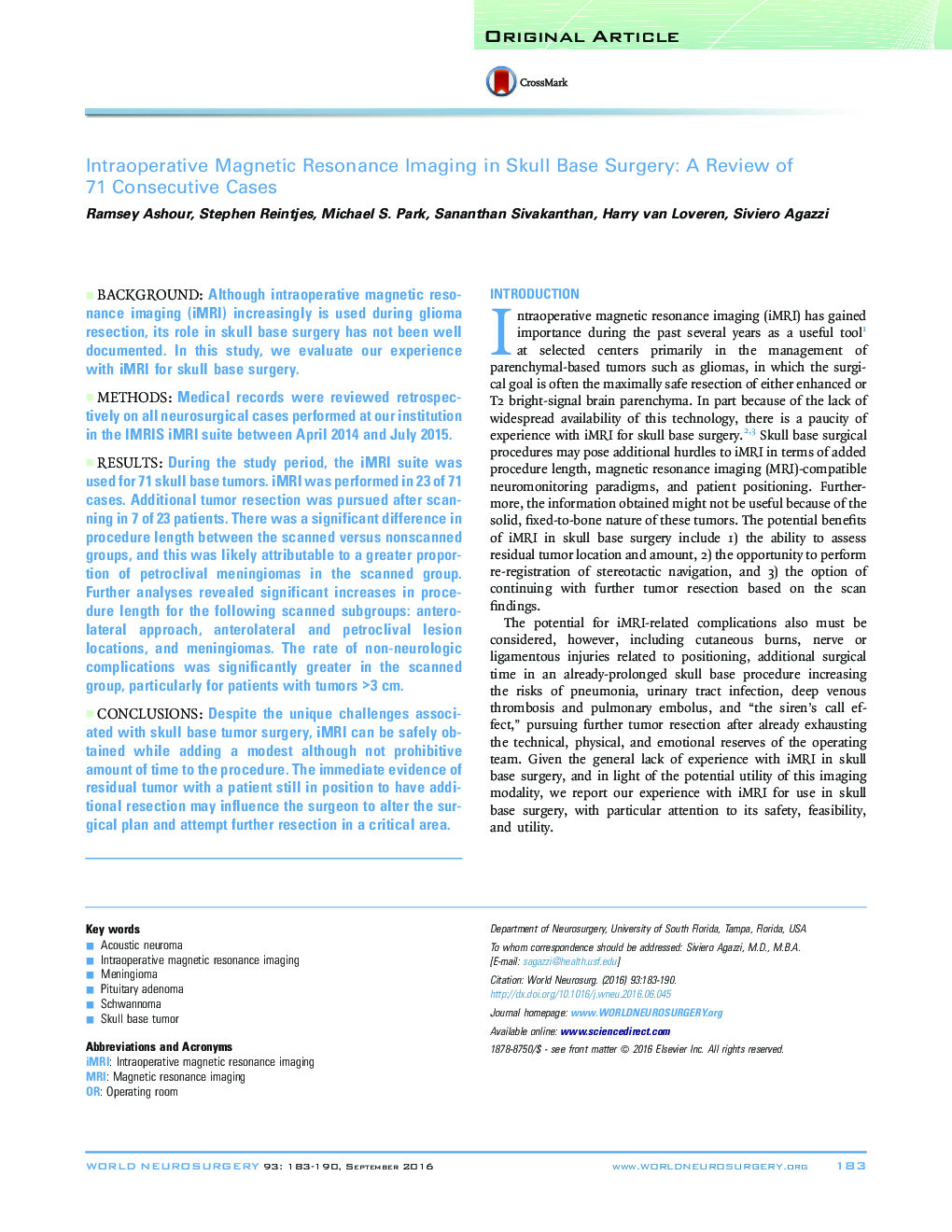| Article ID | Journal | Published Year | Pages | File Type |
|---|---|---|---|---|
| 6043213 | World Neurosurgery | 2016 | 8 Pages |
BackgroundAlthough intraoperative magnetic resonance imaging (iMRI) increasingly is used during glioma resection, its role in skull base surgery has not been well documented. In this study, we evaluate our experience with iMRI for skull base surgery.MethodsMedical records were reviewed retrospectively on all neurosurgical cases performed at our institution in the IMRIS iMRI suite between April 2014 and July 2015.ResultsDuring the study period, the iMRI suite was used for 71 skull base tumors. iMRI was performed in 23 of 71 cases. Additional tumor resection was pursued after scanning in 7 of 23 patients. There was a significant difference in procedure length between the scanned versus nonscanned groups, and this was likely attributable to a greater proportion of petroclival meningiomas in the scanned group. Further analyses revealed significant increases in procedure length for the following scanned subgroups: anterolateral approach, anterolateral and petroclival lesion locations, and meningiomas. The rate of non-neurologic complications was significantly greater in the scanned group, particularly for patients with tumors >3 cm.ConclusionsDespite the unique challenges associated with skull base tumor surgery, iMRI can be safely obtained while adding a modest although not prohibitive amount of time to the procedure. The immediate evidence of residual tumor with a patient still in position to have additional resection may influence the surgeon to alter the surgical plan and attempt further resection in a critical area.
